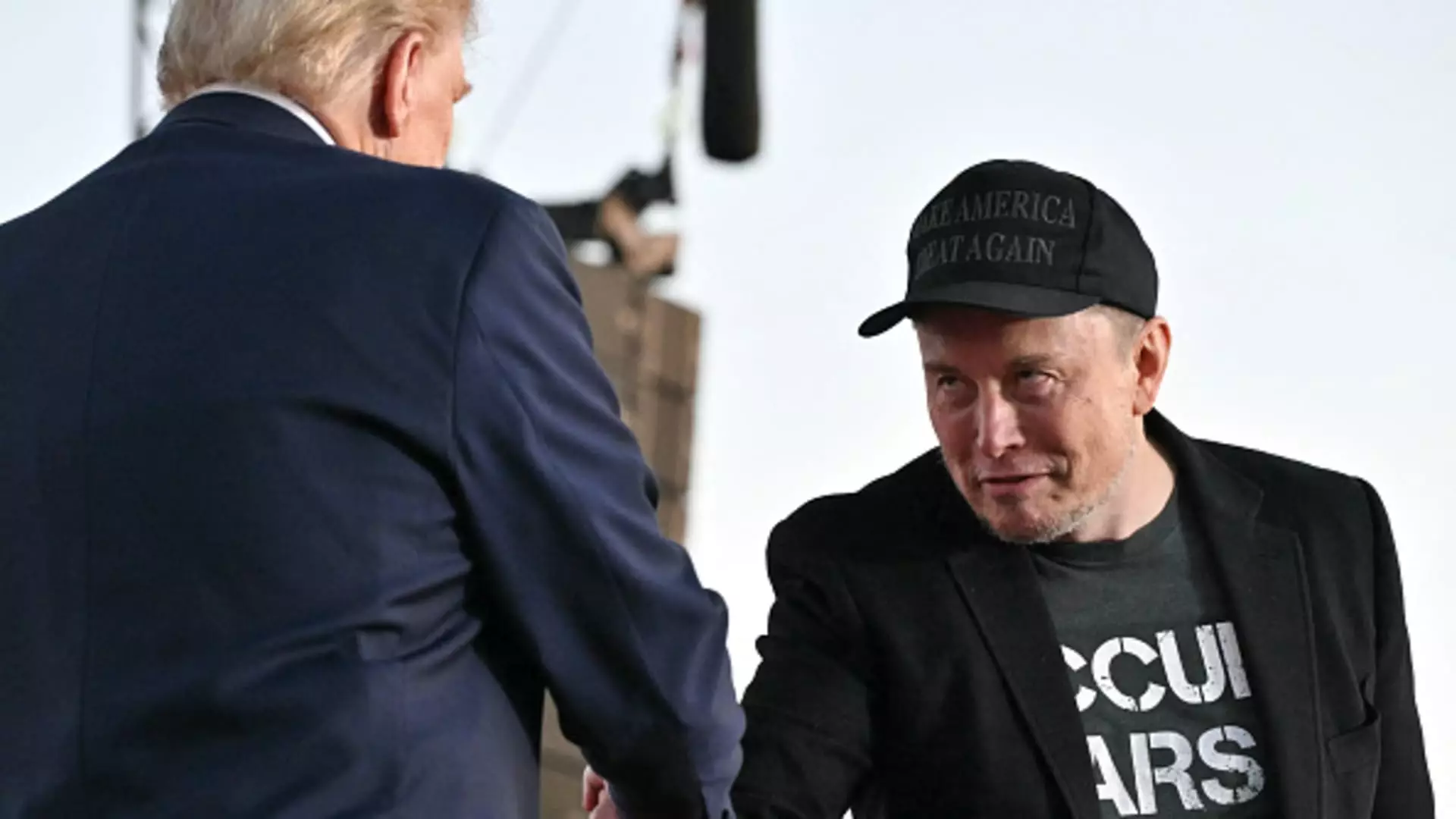On a recent Monday morning, Tesla’s stock experience a notable surge of nearly 8% in premarket trading, driven by reports that President-elect Donald Trump’s transition team plans to prioritize the establishment of a federal regulatory framework for self-driving vehicles. The implications of this move could significantly impact not only Tesla’s market performance but also the broader landscape of autonomous driving technology. As investors anticipate regulatory changes that could benefit Tesla’s ambitious goals, the relationship between technology and governance in the field of self-driving vehicles is coming under intense scrutiny.
Elon Musk has long been a vocal supporter of Donald Trump, aligning himself with the former president’s policies and vision during and after his previous tenure from 2017 to 2021. His close ties to Trump are not merely political, but are steeped in the mutual interest of advancing innovative technology. Musk’s expectations for a more favorable regulatory environment for self-driving vehicles could not come at a better time, especially amid ongoing challenges Tesla faces in achieving fully autonomous driving capabilities. The announcement of the new Department of Government Efficiency, with Musk at the helm alongside other influential figures such as Vivek Ramaswamy, suggests a concerted effort to streamline regulations that currently hinder technological advancement in the transportation sector.
Tesla has long faced critiques regarding its self-driving technology, particularly the promise of delivering a fully autonomous vehicle. Currently, Tesla’s Full Self-Driving (FSD) feature requires human oversight, an indication that the technology is still in development. Despite Musk’s bold projections for the deployment of “unsupervised” FSD in select states by next year, Tesla finds itself at a crossroads. The Federal framework Musk hopes to see established may provide the very support needed to accelerate the deployment of these innovative technologies, but it remains to be seen how quickly and effectively these regulations can be implemented.
While Tesla strives to unlock the potential of autonomous vehicles, it faces formidable competition from established players like Waymo. With successful public launches of self-driving cars, Waymo stands as a crucial competitor in the race for developing reliable autonomous transportation solutions. The competitive strain showcases the urgency for Tesla to not only innovate but to also navigate the regulatory environment that could both enable and constrain its offerings. The outcome of the federal regulatory framework could determine whether Tesla can emerge victorious in this fiercely competitive domain or be left trailing behind.
The interplay of technological innovation, corporate interests, and government regulation will shape the future of self-driving vehicles. For Tesla, the backing of the Trump administration could unlock opportunities that have long been anticipated within the industry. However, the road ahead is fraught with challenges, particularly as the company attempts to balance ambitious projections with the technical realities of autonomous driving technology. As Tesla prepares to unveil its innovative concepts like the Cybercab, the tensions between promise and delivery will continue to be closely scrutinized by investors, regulators, and the public alike. The unfolding narrative of self-driving vehicles will undoubtedly be one of the defining aspects of the transportation sector in the coming years, with Tesla positioned at a pivotal point in this evolution.

Leave a Reply